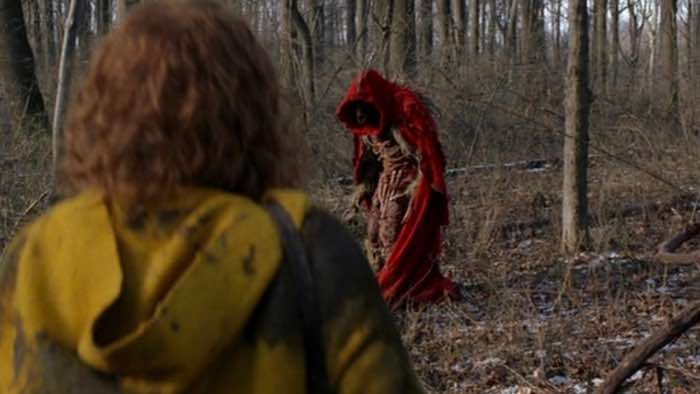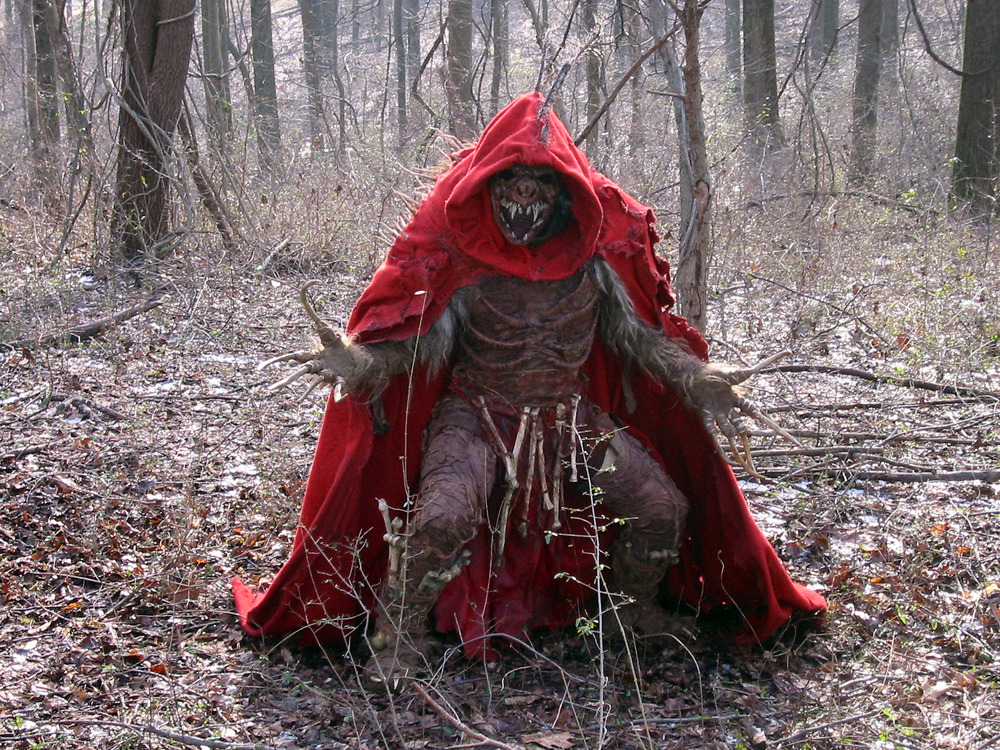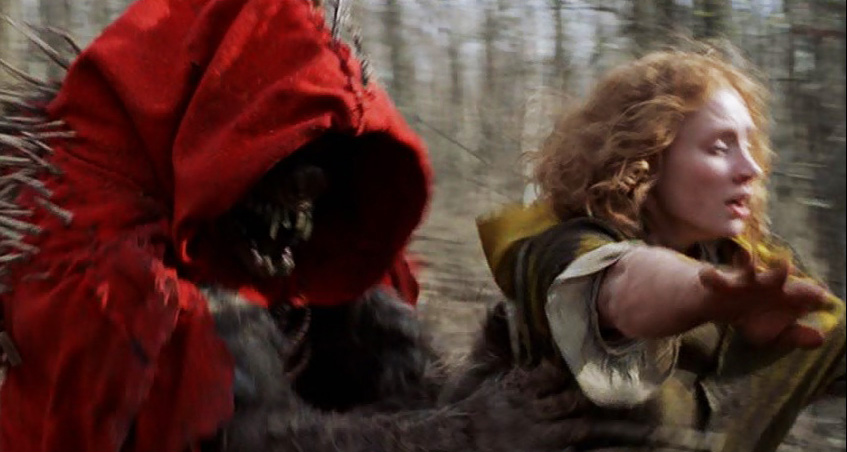This video looks at “The Village,” which is a huge disaster, a film built on an idea that can not stand on its own, a premise so obvious that it would be comical if the film was not so miserable. It is a shaky story with characters who are not one-dimensional and live in Flatland.
It is, nevertheless, a period-piece horror picture set in the remote Pennsylvania hamlet of Covington, whose small collection of farm cottages, clapboard houses, and a church is bordered by a dark and mysterious forest where terrifying animals are said to live and maybe heard howling at night. It is stunning, but it is also an overripe theatrical technique, with the plot already backed up. You will waste too much time trying to figure out the deception when the picture makes you want to leave it alone to carry out its subtle ruses – and there are a lot of them.
The stateliness of the Village devolves into staginess, the danger is unimpressive, and the climactic reveal is both forced and anticipated. As a result, the movie is uninteresting while it is playing and incredibly irritating once it is finished.
You were either tickled crimson by the plot’s cleverness and spiritual implications or ready to rip the posters from the theatre walls in a rage thanks to its well-thought-out deceit. The Village will elicit the same mix of catcalls and acclaim as the Bront sisters’ exaggerated melodramas, despite being set in the well-plowed terrain of the Bront sisters’ overblown melodramas.
The story of a village reserved in time, captivated by monsters

The film’s title alludes to a picturesque village surrounded by dense forests. It’s unclear where it is—there are a few allusions to “towns” outside the woods—or when it happened, but it appears to be preindustrial. Its premise of a secluded Pennsylvania village threatened by unknown animals irritated viewers.
It seemed to stack twists on top of twists. The clothes of the characters and the lack of automobiles, telephones, and other modern conveniences imply either the 1890s or an Amish hamlet. Everyone talks as though they’ve read “Friendly Persuasion.” The two most critical civic qualities are probity and circumspection. This is a community in serious need of an East Village.
The few dozen gentle individuals who live there raise animals, play cheerfully in the fields and speak with an American accent that anybody who has seen fourth-graders perform a Thanksgiving play would recognize. The people of this tiny old hamlet are terrified of “Those We Don’t Speak Of,” unidentified humanoid monsters that live in the surrounding forests. The people have erected a massive barrier of oil lights and continually manned watchtowers.
Following a child’s funeral, the village Elders oppose Lucius Hunt’s plea to cross through the woods to collect medical supplies from the cities. His mother Alice later chastises him for wishing to see the towns, which the peasants consider evil. The Elders also appear to have secrets since they preserve tangible keepsakes buried in black boxes, ostensibly as memories of the wicked and misery they left behind in the villages they left behind.
Following the burial of a seven-year-old child, Lucius Hunt requests permission from the village elders to cross through the woods to obtain medical supplies from other villages. His request, however, is refused. Later, his mother, Alice, chastises him to see the nearby towns, which the villagers regard as evil.
The Elders appear to have their own secrets as well, as they preserve tangible keepsakes buried in black boxes, the contents of which are reminders of the evil and sorrow they left behind when they departed the towns. After Lucius takes a brief foray into the woods, the monsters go warnings in the shape of red paint splatter on all the villagers’ homes.
Ivy Elizabeth Walker, the blind daughter of Chief Elder Edward Walker, tells Lucius that she has emotions for him, and he reciprocates her sentiments. The town considers Lucius to be a somewhat weird young guy. He keeps to himself and rarely interacts with other people. When Kitty Walker (Judy Greer) approaches Lucius to marry him, he declines.
Lucius has known Kitty’s youngest sister, Ivy since they were children (Bryce Dallas Howard). Ivy, blind since she was a child, believes that Lucius has a ‘color’ about him that she can detect. When Lucius is injured after proposing to Ivy, she approaches her father, Edward (William Hurt), to make the same journey that Lucius intended to make — except this time, to save her fiancée. They plan to marry, but Noah Percy, a young man with an obvious developmental and intellectual problem, stabs Lucius with a knife because he loves Ivy.
Noah is imprisoned in a chamber until a decision on his destiny is made. Edward defies the other Elders by allowing Ivy to traverse through the forest in search of medication for Lucius. Before she goes, Edward reveals that the animals in the woods are actually members of their own community dressed in costumes that have perpetuated the monster tale to terrify and deter others from attempting to leave Covington.
He also reveals that the outfits are inspired by real-life animals that formerly roamed the forests. Ivy and two young men are dispatched into the woods, oblivious of the Elders’ charade. Still, both protectors desert Ivy quickly, assuming the animals will kill them but spare her out of sympathy. Noah gives Ivy some red berries one day while they are in a bit of a spot near the woods’ boundary.
They do not grow in the hamlet, and Lucius believes Noah went into the woods and was not hurt by the monsters there. One of the beasts attacks Ivy as she travels through the woodland. She dupes it into falling into a deep hole and dying. This makes Lucius even more determined, and he returns to the elders to request another trip to “the towns.” Lucius feels that if the monsters let Noah enter the woods without damage, they will do the same to him. However, it is quickly shown that someone well-known managed to fool others.
Ivy ultimately makes her way to the edge of the woods, where she comes across a tall, Ivy-covered wall. Ivy finds a park ranger driving a patrol car after climbing over the wall at the woods’ edge, who is surprised to learn she has emerged from the woods. Ivy sends the ranger a list of medications she needs to obtain. The ranger speaks to his employer without disclosing his experience with Ivy.
It is revealed that it is the early twenty-first century, not the nineteenth. Edward Walker, a professor of American history at the University of Pennsylvania, built the hamlet in the late 1970s. He teams up with people he met at a grief counseling clinic to create a safe haven where they may live and be protected from the outer world. The woods are actually the Walker Wildlife Preserve, named after Ivy’s family.
Ivy requests assistance and hands Kevin, a list of medications she needs to obtain and a gold pocket watch as payment. It is discovered during this period that the community was initially founded in the late 1970s. Following his father’s murder, Edward Walker approached other people he met at a grief counseling clinic and asked them to join him in creating a place where they could sustain themselves and be protected from the outside world.
When they agreed, Covington was erected in the heart of a nature preserve acquired with Edward’s family riches. Our inhabitants have long since reached an agreement with these monsters: in which the villagers do not enter the woods, and the creatures do not enter the hamlet. This connection appears to be accompanied by some sort of meat tithe rite. Despite the elders’ faith in the arrangement, the villagers continue to staff watchtowers throughout the night.
The end comes as a kind of an upside-down shock for the audience. It is deception at its best- for the characters and the audience. The settlement maintains an uneasy peace with these creatures, with the unspoken agreement that monsters are not permitted in the valley and people are not permitted in the forests.
However, there are indications that this covenant is disintegrating. Small creatures are being discovered strangled and skinned. The monsters are even leaving red imprints on select dwellings; the monsters, it appears, are drawn to the color red. The mystery of Those, and so on, is eventually exposed.
It would be an insult not just to climax but also to prefix it as an anti-climax. It’s a sinister secret, roughly one level up the narrative creativity scale from It Was All a Dream. It’s so stupid, in fact, that when we find out the secret, we want to rewind the movie, so we don’t know it anymore.
There are so many improbable elements to The Village’s plot surprise that it’s difficult to know where to begin examining its folly. For starters, are we to think that this is the first time someone has required outside medication to survive in decades?
Or are we to assume that everyone before this was just permitted to perish from incurable diseases and injuries? Wouldn’t that negate the objective of establishing the community in the first place, which was to prevent future loss of life? It stretches believability to its breaking point.
The fact that the town’s colossal secret remains a secret is the most challenging story aspect to accept, given that Lucius threatens to open the black box containing the town’s most important secret at one point in the film. When his mother warns him not to open it, she just walks out of the room.
It may not appear to be such a colossal blunder to the untrained eye. Still, after you learn the major surprise at the end, you’ll understand that there’s no way this could have been kept a secret for so long. The ending of The Village isn’t shocking. It has a twist at the beginning of the third act, and as we move closer to the finish, we learn more and more about that twist. The issue here is that the twist is ridiculous and serves no function other than to build the subtext.
The monster

The forest surrounds the settlement. There are ugly, vicious monsters dressed in scarlet with twig claws in the woods. They are referred to as Those We Do Not Speak Of (except when we want to end a designation with a preposition). We only see glimpses of Those We Do Not Speak, etc., like the water-fixated aliens in “Signs.” They appear better than the aliens from “Signs,” who resembled gigantic extras in long underwear.
In contrast, Those We Do Not, etc., seem like they were made during summer camp. “The awful color” is so horrible that it is illegal in town. When the kids notice anything red sprouting from the ground, they must immediately pick it up by its roots and bury it beneath the grass. The monsters that everyone is scared of are only a manifestation of an endeavor to protect the community and guarantee that no one from the Village leaves.
They are tall, slender, and cloaked in a scarlet cape of dried twigs. However, red is not how the people characterize the hue; it is referred to as “the terrible color.” As a result, Those We Do Not Speak Of dress in “the terrible color” and stalk the villages, instilling fear and prompting some locals to take action.
Why you should watch The Village 2004?

Shyamalan’s decision to keep the idea of the monsters being really alive, even when Edward admits that they’re made up (“based on local folklore”), is a clever little twist for viewers who want Ivy to accomplish her mission safely. But her decision to continue on the trek nevertheless, and then to confront what she comes to think is an absolute beast, throws her love for Lucius and the significance of keeping the Village’s legendary underpinnings over its terrible reality into sharp relief.
Shyamalan undoubtedly returns to the twisted approach he seemed to leave for Signs. Halfway through, there’s a medium-sized twist, then a sort of small counter-twist where the previous twist appears to be wiped out, and finally, a mega-twist so huge that it’s supposed to leave you with whiplash, a neck brace, and months of chiropractic therapy. However, in each case, the twist is telegraphed with a weak explanation, dulling the effect, and the ultimate surprise just does not work in the first place.
The entire premise collapses through one of Shyamalan’s many bus-sized narrative holes. Which, to be honest, is a shambles. There are both significant and tiny flaws. Many, if not most, of the individual sequences in “The Village”, are forced, emotionally fake, and desperate in their earnestness, which negatively impacts Shyamalan’s directing of the performers. He handles with regard for material that Hitchcock would have scorned.
He conducts the material as if he wrote it (which he did), and no one dares to tell him otherwise. As a result, gifted performers like William Hurt, Sigourney Weaver, Adrien Brody, and Joaquin Phoenix aren’t so much steered toward intelligible performances as they are engaged in a conspiracy of humorlessness.
The Village, then, stands notable as an early attempt to explain — albeit in veiled, metaphorical language — the psychological motivations that propelled the US into Iraq in early 2003. The idea continues in a late-film scene where one mother monitors her son’s recovery as two other parents are notified of their son’s death in the background. The image is reminiscent of several wartime images of the family on the home front getting dreadful news. At this juncture, “The Village” resembles “Signs,” a film about small-town residents grappling with unexplained signs of an impending extraterrestrial invasion.
Shyamalan’s “Signs” method of implying creatures without revealing them is used again. But what little we see of them this time — scarlet hoods and long red sleeves — is almost comical. In fact, there are times when “The Village” appears to be on the verge of being as corny in its effects as a low-budget horror picture.
The Village is littered with subtext, and almost as if it were his new joke, the twist (if it can even be called a twist) solidifies what you’d have to call the ‘sub-text that’s really there,’ primarily in contrast to Shyamalan’s previous efforts, where twists solidified the ‘text that’s really there.’
It’s brilliant, if overused, sub-text about escaping the dishonest and manipulative ‘evil society’ by constructing our own miniature version of the same, but it’s a monotonous, even crude, demonstration of such a sub-text. Shyamalan’s elegance maintains his film barely above the abyss. To see a Shyamalan picture is to notice the Hitchcock influence, but how can someone replicate Hitchcock without catching up on his most prominent feature, his sense of humor?
Hitchcock’s macabre humor runs throughout the film and is employed in various ways, including as an aim in itself, to undercut or create suspense, or to deflect from, excuse, or draw attention to the story’s unexpected turns. A touch of humor may have aided “The Village.” It couldn’t have done any harm. The fact is that nothing could have gone wrong.
The film is so depressing that it is reluctant to speak out in its own presence. Even at periods of outrageous melodrama, it’s boring as a result. This film comes to life as a tale and a further stage in his filmmaking journey. The Village has a visual magnificence seldom seen in a mystery film with horror elements, thanks to brilliant lighting, the use of vivid primary colors red and yellow, and some inventive long shots.
On the other hand, the tale does not match up to the superb aesthetics. Despite its weaknesses and logical gaps, it captivates you if you are prepared to be sucked into Shyamalan’s universe. It demonstrates a command of narrative and growing expertise in how to employ the twists or shocks that have become his specialty.
We proceed through the film just by getting to know the stale and lifeless characters in front of us. With the potential exception of Bryce Dallas Howard’s Ivy, the whole hyped-up cast is squandered on stock, hollow shells of characters that were cardboard cut-outs in their greatest versions. Adrien Brody’s performance is excellent, yet it is a beautiful rendition of an old cliche that fills an imagined hole.
The Village plays out like a cinematic version of a discussion with someone who says, ‘Do you get what I mean by saying that?’ This was a really inventive film. You’d never believe anything like this could be accurate, but it is. There is a glimmer of romance, and don’t be fooled by the plodding narrative line.
The narrative finally comes down to the same dilemma that many stories set in ‘isolationist’ tribes do: traveling to civilization for medication. It is up to Ivy, who is blind, to make the trek to ‘the towns’ in order to save someone who has been harmed. The film is constructed in such a manner that everything makes sense towards the conclusion.
The Village has endured not just as a great M. Night Shyamalan story, but as one of his best, not because each new detail about these characters and their world surprises us, but because the filmmaker uses them to flesh out his vision, to offer new perspectives, and, most importantly, to anchor, fulfill, and deepen the ideas and emotions that make those details seem so surprising.
Perhaps the Village has something to offer. It has moments that capitalize on Shyamalan’s semi-psychological scare power with his dismal atmosphere and physical feeling of dread. Still, even at that level, the film only gets you so far since nothing ever coalesces into anything. There’s a lot of ‘that which may be disclosed,’ and the tense tension that comes with it, but The Village is a film about knowing secrets, and the more we learn, the less we understand how anybody could care.
